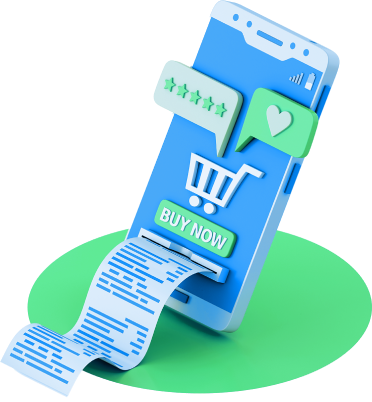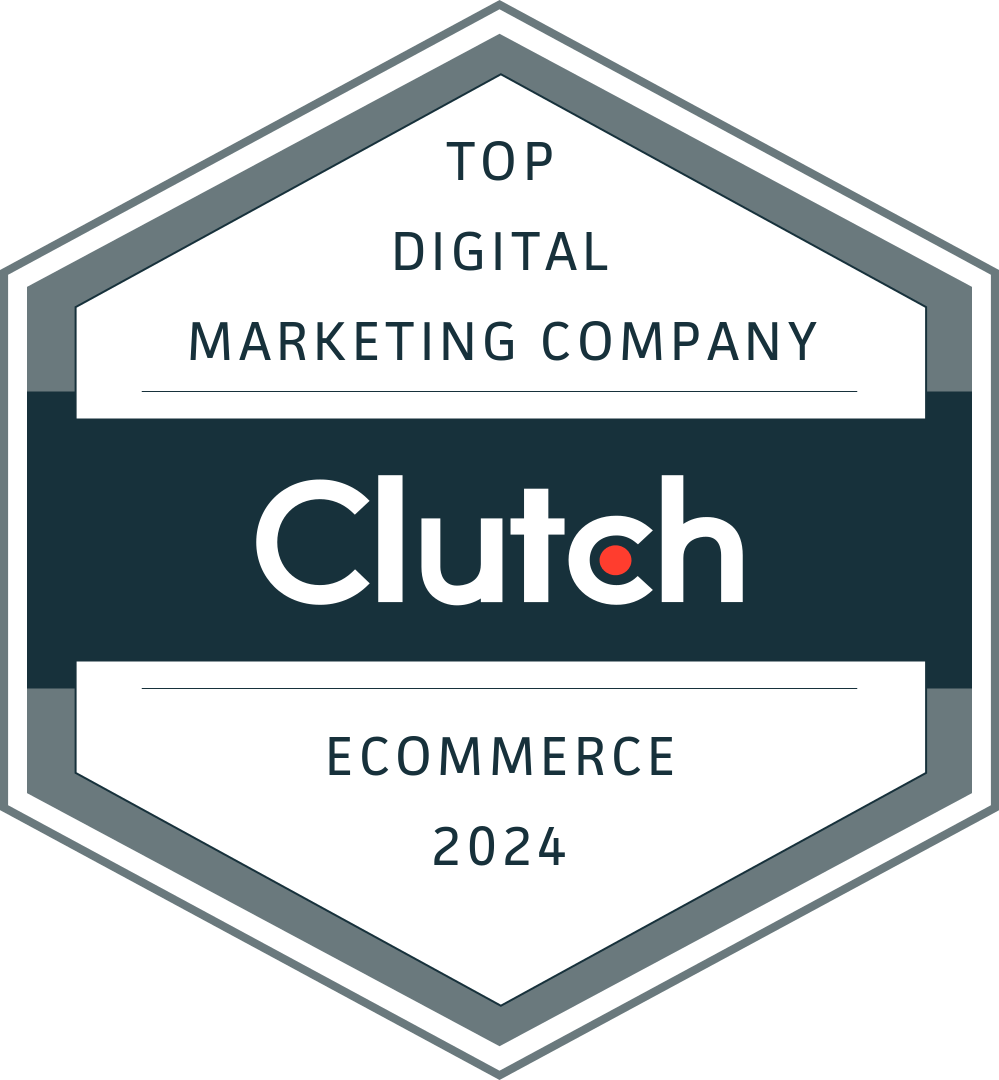- Home
- Industries
- Retail Ecommerce
- Ecommerce 7 Basic Ecommerce Marketing Concepts
7 Basic Ecommerce Marketing Concepts
Learn how to grow your ecommerce business with strategies like personalization, product recommendations, cart reminders, social sharing, product reviews, targeted emails, and a responsive website design.
-
insights from 179,000+ hours of retail & ecommerce marketing experience
Ecommerce is one of the most competitive industries on the Internet. No matter what you’re selling, there’s bound to be at least one other company selling the same products — or at least products that do the same thing.
That means it comes down to marketing to see if you can get more customers than your competitors.
But how do you market an ecommerce company? What specific strategies can help you achieve success?
We’ll cover some of the most important basics to ecommerce marketing on this page. With these principles on your side, you can help your ecommerce company grow to new levels of success. Keep reading to find out more, and give us a call at 888-601-5359.
1. Personalization

No matter what you sell, it’s essential that your company relates to your potential customers on a personal level.
Personalization is the process of tracking what your site visitors look at on (and off) your site, so you can get a better understanding of their preferences.
Then, once you know their preferences, you can use cookies to each customer an experience on your site that was designed specifically for them.
Personalized website content helps you build relationships with your site’s repeat visitors by showing them the perfect message at the perfect time.
You can even go so far as to offer special deals to certain individuals who buy specific products on your site.
Whatever you choose, it’s important that your site has some degree of personalization. Ecommerce shoppers love seeing messages that are tailored to their interests, and it’s a great way to move more products.
Hear What It’s Like to Work With WebFX!

“Our WebFX team was on top of everything. Best part is our lead contact felt like she was part of our company. She learned everything about our business so quickly and was able to be very efficient with our brand. Reacting to what we needed or wanted to change, making us feel so comfortable the whole way!”
Retail
2. Product recommendations

Along with personalization, you can also provide product recommendations.
Product recommendations show your potential customers that you pay attention to their wants and needs. It also allows them to get a bigger picture of your inventory and — as we mentioned above — move more products.
You can use product recommendations in a number of ways.
First, you can add your own company recommendations. These would most often be products that are similar to something a customer has already bought.
Second, you can highlight user recommendations. These can be items like wish-lists that your customers share with one another. This also requires your site to have the functionality to allow users to share items internally, but it can pay dividends.
After all, word of mouth is the most trusted form of advertising.
Third, you can use recommended products to show customers products that complement what they’re currently buying. So if someone’s buying a garden hose from your housewares store, you should also show them different hose heads or wall spigots, so they’re buying a group of products that work together.
However, once your customers have those items in their carts, there’s no guarantee that they’ll buy everything.
That’s why you need this next crucial part of ecommerce marketing.
3. Cart reminders

One of the most frustrating parts of running an ecommerce store is customers who leave your website when they have products in their carts.
That’s why you need to use cart reminders.
Cart reminders are emails that automatically generate and send whenever someone has a cart of products and leaves your site. The emails can send out a day after the customer leaves, or sometimes as long as a week or month later.
Regardless, the point is always the same — to get that customer back to your site and have them finish their transaction.
Shoppers who have accounts with you have already given you their email addresses, so you can communicate with them. They’ve also shown clear interest in the products they added to their cart themselves.
So you’re giving them what they want by reminding them about their abandoned cart. And even if they’re not able to finish their transaction that same day, they may finish it a week later when your email arrives in their inbox.
But carts aren’t the only part of ecommerce marketing that you need to add.
4. Product social sharing

Social media marketing is a critical part of any Internet marketing plan.
But it’s exceptionally important for ecommerce companies.
For every product on your site, you have an opportunity to cause an impact on social media. Someone shopping for your items might find something their friend would like, so it’s important that you let them tweet, post, or share about what you have.
Then, the friends of the person who shared your product will see what they posted. That lets them click to your site — at their friend’s recommendation — and possibly become a new customer.
In other words, social sharing lets your customers market for you. All you have to do is provide the product and the means to share it.
But there’s still one more marketing concept that you need to implement if you want your ecommerce store to really succeed.
5. Product reviews
Did you know that up to 70% of customers check out ratings and reviews before making a purchase? And 63% of customers are more likely to purchase if a site displays product ratings and reviews.
Adding reviews to your ecommerce website provides value to customers and encourages them to buy from your site. Online reviews provide the social proof shoppers are looking for, and they can help your ecommerce store establish trust and credibility with customers.
In addition, new reviews can help keep your site content fresh and improve your chances of earning higher rankings in search engine results.
Be sure to make it easy for customers to leave reviews on your site. You can even offer incentives like coupons, discounts, and sneak previews to encourage customer reviews.
6. Email campaigns
Email marketing accounts for over 7% of all ecommerce transactions, so incorporating a strong email strategy can help your ecommerce store attract more customers and earn more revenue.
In addition to sending abandoned cart emails, you can use email marketing to send personalized updates to customers and potential customers. For example, you can send personalized emails on customers’ birthdays or other important milestones. Studies show that personalized birthday emails have almost five-times the transaction rate of standard emails.
You can also use email to let customers know about new products and even offer exclusive coupons or promotions to email subscribers. Email marketing is also a great way to connect with customers after they make a purchase and encourage them to review the item.
7. Responsive design
Your customers don’t just shop on desktops or laptops. They shop on phones, tablets, and other devices that all show your website in different ways.
So, how can you make sure every one of your customers gets the same great experience on your site?
The answer is responsive design.
Responsive design automatically adjusts your website to fit the device that a person is using. So if someone’s on your site with their phone and their laptop at the same time, they can still see and read your site perfectly.
That’s essential to ecommerce because if your site isn’t responsive, you’ll lose mobile customers left and right. Mobile customers are becoming more and more common as well — they make up nearly half the market of ecommerce shoppers.
In other words, if you want to make sure you reach your customers, you need a responsive website right away.
Partner with a team of ecommerce masters!
WebFX campaigns have delivered more than 14,936,451 ecommerce transactions in the last 5 years
Read the Case Studies

WebFX knows ecommerce marketing
These basic ecommerce concepts are some of the best ways for you to grow your ecommerce company. But what if you don’t have the time to implement all of them?
At WebFX, we work with lots of different ecommerce companies to help them sell products online.
Our team of experts has worked in SEO, PPC, and other Internet marketing disciplines for years now. We use this experience to deliver stellar results to our clients day after day.
Do you want to grow your ecommerce company?
Contact us today to create a new marketing plan specifically for you!
We Drive Results for Ecommerce Stores
- 14.9 million+ transactions generated for clients
- 10+ different departments to support your website



Additional Reading
- 20 Ecommerce Industry Trends to Know in 2024
- 5 Best Ecommerce CRM Software Options of 2024
- Ecommerce Marketing Pricing Guide
- Ecommerce PPC: Everything You Need to Know
- Ecommerce SEO
- How Much Does an Ecommerce Website Cost?
- SEO for Fashion Ecommerce: 6 Tips on SEO for Fashion Brands
- Social Media for Ecommerce: a Quick Guide
- The 5 Best Ecommerce Marketing Agencies of 2024
- YouTube Ads for Ecommerce: 5 Tips for YouTube Ecommerce Ads
How We Drive Revenue for Businesses
- AI Marketing Services
- B2B Digital Marketing Agency
- Business Consulting Services
- Business Marketing Agency
- Channel Partner Marketing Agency
- Channel Partner Marketing Pricing: How Much Does Channel Partner Marketing Cost?
- Channel Partner Marketing Services
- Conversion Optimization Agency
- Conversion Rate Optimization Services
- Digital Marketing Agency for Small Business
We Drive Results for Ecommerce Stores
- 14.9 million+ transactions generated for clients
- 10+ different departments to support your website



Explore our retail & ecommerce case studies
Read our case studies for a more in-depth look at our results.
Solving key challenges for ecommerce companies
Our website isn’t driving enough traffic
Boost your online visibility and brand awareness with our top-tier marketing services that increase your rankings in search results so you can outshine your biggest competitors and drive more qualified traffic to your website.
We’re not selling enough products
When you partner with WebFX, boosting your product sales is a breeze. Our expert designers and marketing specialists will optimize your product pages and ad campaigns for maximum conversions, ensure your site provides a great user experience (UX), and more.

We aren’t acquiring new customers
Struggling to reach new members of your target audience so you can increase your sales? Our team can help you launch highly-targeted advertisements and marketing strategies that reach the people most likely to purchase your products (and turn them into loyal customers).

We’re not retaining customers
The team at WebFX specializes in helping your ecommerce store implement strategies that build brand loyalty to keep past customers coming back to purchase more of your amazing products.


